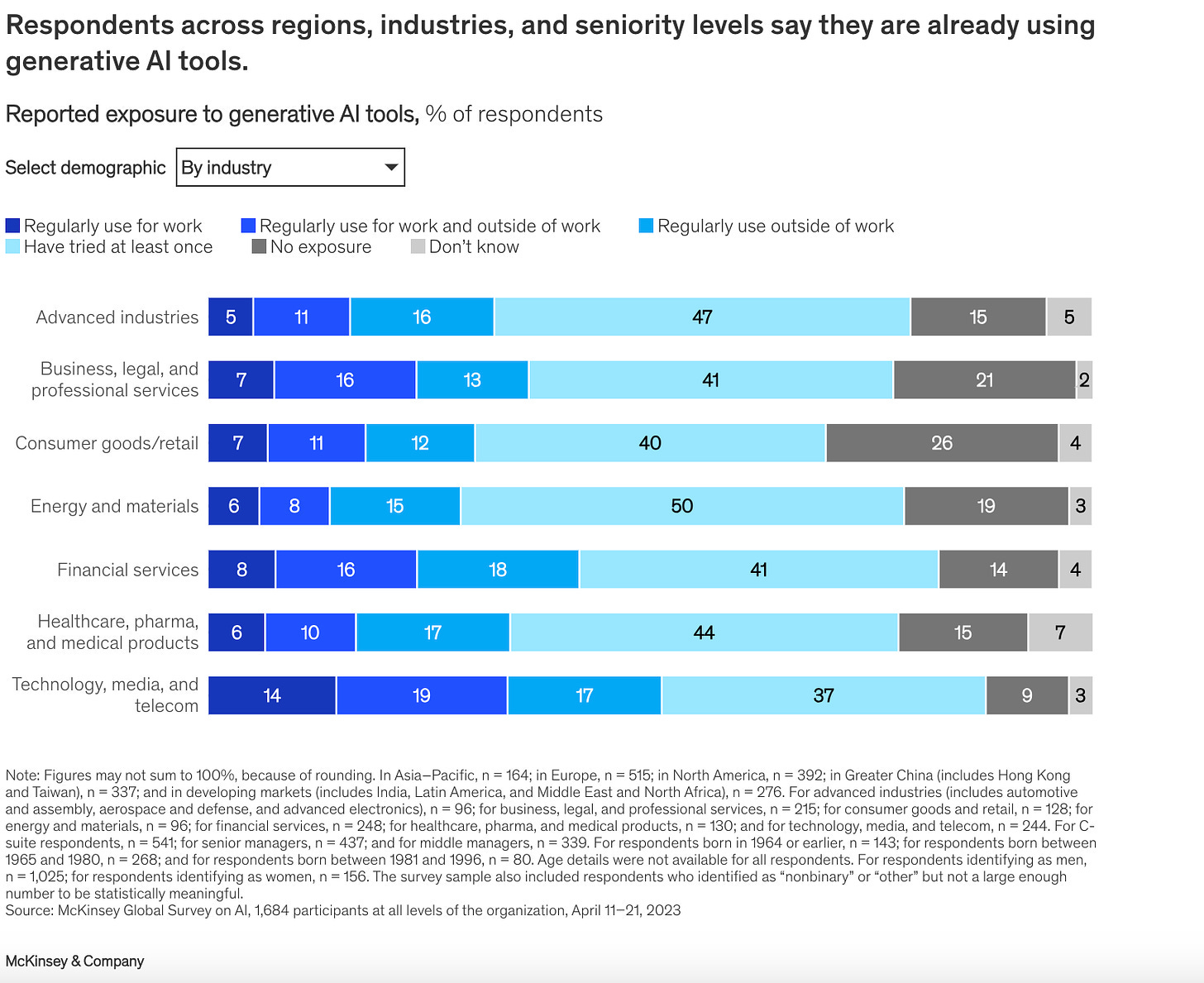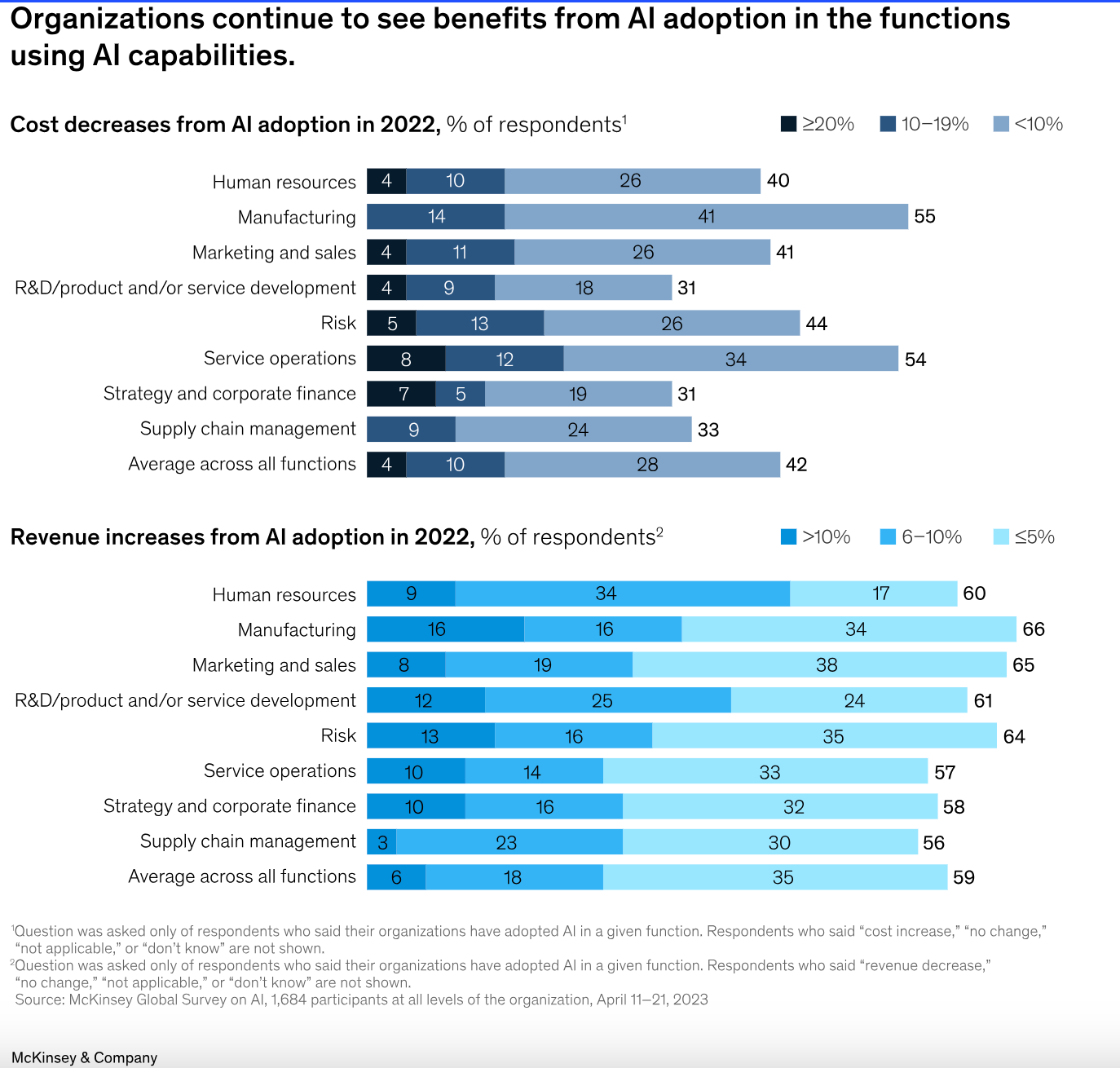Generative Craze
One year on from the '22 Christmas-dinner fanaticism about ChatGPT and 'AI', we find ourselves even more entrenched in a technology that has most certainly defined our past year. Our relationship with technology has deepened, as the dizzying pace of advancement in Generative AI (from hereon referred to simply as 'AI') over the last 12 months has left everyone both a mix of shellshocked, excited, scared, and all other emotions in between.
As Andrew Ng said, "AI is the New Electricity." In this post, I hope to consolidate my knowledge, having spent the past year (and some) building Microsoft Copilot (in Edge and Windows) and exploring its daily applications. I will share my perspective on "why this all matters and provide some further justification for this unparalleled excitement?" The perspective outlined in this post will be optimistic and favourable in nature, as I outline what I see to be the positives and explain the value of AI.
Empowering the Ordinary to Achieve the Extraordinary
At its core, AI reduces barriers and expands possibilities unlike any previous innovation. It enables ordinary people to achieve extraordinary outcomes, even if they lack specialised skills.
This concept of empowerment and resourceful problem-solving traces back to an idea called "jugaad" in India - creating improvised solutions by piecing together limited resources. For example, if you are given a task but don't have the proper skills or resources to accomplish it, you might use jugaad. Effective jugaad is about coming up with simple yet elegant solutions that fit the specific context, applying solutions from different contexts in an innovative way, and solving problems with far fewer resources than ideally needed through a deep understanding of the problem and intended usage. Jugaad aims to extract the maximum value by focusing resources on the essence of the solution (see Essence Analysis) while cutting unnecessary costs, achieving solutions and results under imperfect conditions.
The ethos behind jugaad has parallels to concepts that business leaders use to evaluate value and prioritise decisions. When building Product, we employ prioritisation frameworks like the KANO Model, RICE scoring, and MoSCoW method to determine net value - assessing what value a given product feature will deliver versus its cost to implement. Businesses more broadly refer to this analysis as weighing profit - the value returned minus the total costs. The finance world calls this return on investment. Through resourcefulness and creativity, both jugaad innovators and strategic business leaders seek clever ways to deliver outsized impact using the most limited viable resources. Just as jugaad achieves more with less through flexibility and simplification, disciplined business decisions chase maximum payoff for minimum required investment by stripping away distractions and unnecessary expenditures. AI takes this to a whole new level by exponentially amplifying our capabilities.
AI Amplification
This technology doesn't merely assist us in incremental ways. It fundamentally changes the equation of what's possible by simultaneously increasing value and reducing costs (resource needs) at unprecedented scale. Put another way, AI unlocks nonlinear profits and return on investments.
Microsoft's GitHub Copilot, for instance, has already reached over $100 million in annual recurring revenue by amplifying developers' productivity.

In a recent McKinsey study, their latest research estimated that, conservatively (across the 63 use cases they analysed), generative AI could add $2.6 to $4.4 trillion in global economic value annually. That’s roughly equal to or greater than the United Kingdom’s entire GDP in 2021, which was $3.1 Trillion. They added that “this estimate ($2.6T-$4.4T) would roughly double ($5.2T-$8.8T) if we include the impact of embedding generative AI into software that is currently used for other tasks beyond those use cases.”
While large companies stand to realise productivity gains and developers tap into new efficiencies, the deeper promise of AI is empowering ordinary people to achieve remarkable outcomes. At its core, this innovation channels concepts like jugaad—unlocking creative potential through improvising solutions with limited resources. Where expertise and directed toil were once essential, barrierless creation is now possible. An artist can visualise intricate alternate worlds with Midjourney, or an amateur writer can craft compelling stories with tools like junia.ai. Complex production tasks from video effects to graphic design are automated instantly by AI systems like Pika and Runway. This democratisation of creation fosters new exchanges of ideas by radically expanding who can bring their visions to life. Much as jugaad extracts outsized solutions from minimal materials, this technology returns us to the roots of scrappy, improvisational problem solving for the ordinary person. The extraordinary results speak for themselves—from the proliferation of original content to the blossoming of once hindered imagination, unlocked.
Why Now?
So, what sparked this Cambrian explosion in AI capability? The key was reaching an inflection point where multiple technologies converged and compounded each other's impact. Specialisation in areas like data infrastructure, computing power, software architectures, and algorithmic advances built up momentum gradually over the past decade. But bringing all those pieces together led to a tipping point where the synergistic potential was far beyond individual contributions - a classic case of the whole exceeding the sum of its parts.
Boz, Meta’s CTO, discussed this as “innovations that happen gradually then suddenly”
“Individual breakthroughs tend to accumulate in a non-linear way until suddenly, the future comes into focus. As the old saying goes, it happens two ways: gradually and then suddenly. And as we close out a wild 12 months of technological progress, I think it’s fair to say that 2023 has been a “suddenly” kind of year.”
Andrew “Boz” Bosworth, Meta CTO
Freda D, Altimeter Principal, aptly notes how timing makes all the difference, using the example of the older Meta's Ray-Ban Stories versus the new Ray-Ban Meta smart glasses. Despite similar functionality, the Ray-Ban Meta has seen far greater adoption in its first 3 months, which Freda attributes to enhanced AI capabilities priming consumer demand. This directly mirrors CTO Boz's comments about technology advancement happening "gradually, then suddenly" - steady progress accumulating then abruptly accelerating when the conditions align.
In the case of smart glasses, while previous offerings like Google Glass and Snap Spectacles failed due to issues like high prices or limited use cases, the Ray-Ban Meta launched at a time when AI assistants have built excitement and proven utility in the market, making integration into a new wearable form factor very compelling. Gradual advances in AI, computing power, and algorithms over the past decade have now reached an inflection point where practical consumer applications have come sharply into focus, unlocking new product possibilities.
So as Boz discussed, the interplay of specialised innovations accumulating have ultimately compounded impact in a non-linear way. With these synergies fully aligning – the future emerging gradually, then suddenly, much as we are now seeing with AI use cases like the Ray-Ban Meta meeting pent-up consumer demand. When technologies converge at the right time, it unlocks the next wave of progress.
Exponential Advancement
The genie is out of the bottle and AI will increasingly transform our personal and professional lives in the coming years through this unique ability to push boundaries. While concerns about potential downsides are valid, the problem-solving power AI unleashes for human empowerment remains unmatched. Just as past general purpose technologies like electricity fundamentally reshaped society, AI promises to help unlock new solutions for global challenges if harnessed responsibly.
What matters in the end is whether we solve meaningful problems better and faster. On that front, AI delivers exponentially and enables all of us to achieve more.
Thanks for Reading,
Ary







